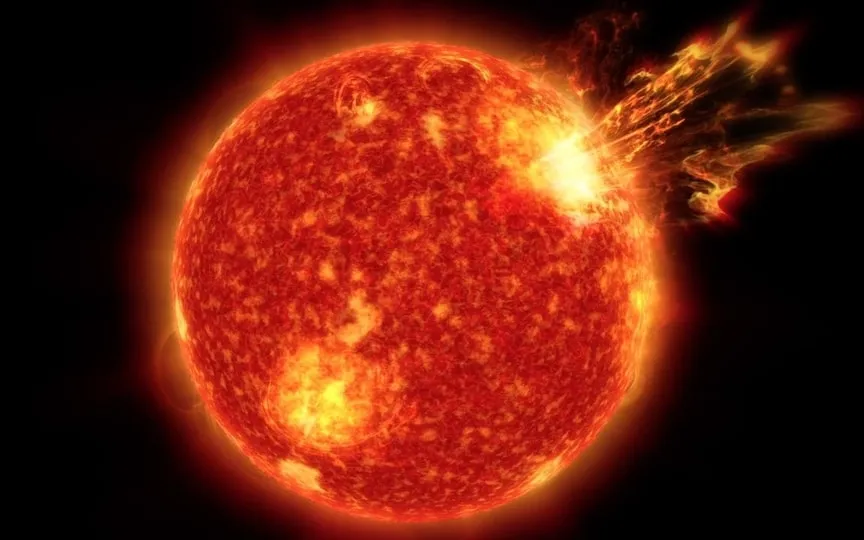Impact of Solar Storms on Technology on our Planet
Have you ever wondered about solar activity? It encompasses various phenomena such as coronal mass ejections, high-speed solar wind, solar flares, and solar energetic particles, all of which are influenced by the magnetic field of our Sun. It’s fascinating to think that these volatile solar activities power everything in our solar system. But did you know that they can also impact technology worldwide, both on Earth and in space? Solar storms caused by the Sun can have destructive effects on power grids, the Internet, satellites, and even your mobile phone.
The cycle of the sun
The Sun goes through regular periods of solar activity lasting about 11 years, during which its magnetic field reverses. This cycle begins with a “solar minimum,” a period of low solar activity, followed by a “solar maximum,” when the Sun is most active, characterized by extremely powerful sunspots, solar flares, and coronal mass ejections (CMEs).
What do scientists say about solar activity?
According to a report by EnergyPortal.eu, scientists have been tracking these solar cycles since 1755, and we are currently in cycle 25 and heading towards the solar maximum, which is expected to peak in 2024-25. This cycle has exceeded initial predictions.
The effects of the sun’s activity on the Earth
According to NASA, solar flares affect the Earth when they occur on the side of the sun facing our planet. These flares emit photons that travel directly from the flare site. Thus, if a flare is visible from Earth, it could potentially affect us.
On the other hand, coronal mass ejections (CME) are massive clouds of plasma and magnetic fields that erupt from the sun. Unlike flares, CMEs can discharge in any direction and continue on the same path. When a CME reaches Earth, it can cause quite an impact on our planet.
Solar maximum: cause for concern?
Experts predict that Solar Cycle 25 will be moderate in intensity, with an estimated 4-6 flares per day during solar maximum.
Impact on technology
When a solar storm hits the Earth’s atmosphere, it causes a geomagnetic storm. If the solar storm is not very strong, it can lead to only beautiful aurora borealis at the poles. However, if a strong solar storm hits Earth, it can send powerful electrical spikes through the electrical grid, effectively damaging it and causing blackouts. It could have a similar effect on all the undersea cables that carry most of our internet, damaging critical parts that will take months to repair. Satellites in the sky also suffer damage unless they are turned off or otherwise protected.
It all depends on how strong a solar storm the Sun has created, which is why there is so much interest in solar maximum, which we are slowly approaching.




